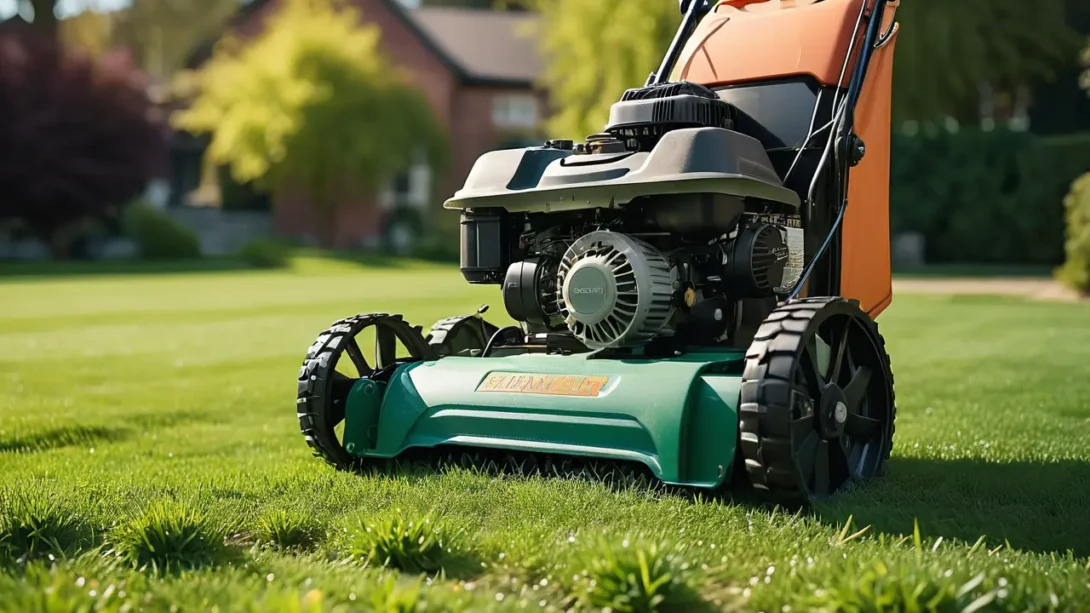Lawn maintenance is crucial for any homeowner or gardener who takes pride in a vibrant, healthy-looking garden. Among the various tools and techniques available for lawn care, the scarifier stands out as a critical yet often overlooked instrument. This article delves into what a scarifier is, its purpose, and how it differentiates from other lawn maintenance tools.
Scarifiers
A scarifier, also known as a lawn scarifier or dethatcher, is a gardening tool designed to cut through the soil, helping to remove dead moss and other debris like grass cuttings. The goal of using a scarifier is to promote a healthier lawn by enhancing the soil’s aeration and facilitating the growth of new grass shoots. Unlike simple raking, scarifying involves cutting into the soil to a deeper level, which can significantly improve the lawn’s overall health and appearance.
Scarifiers differ from aerators and dethatchers in their method of operation and the results they achieve. While aerators puncture the soil to improve oxygen and water flow, scarifiers physically remove thatch (a layer of dead organic matter) from the lawn. This distinction is crucial for gardeners to understand, as each tool serves a unique purpose in the holistic approach to lawn care.
How Scarifiers Work
Scarifiers are equipped with steel blades or tines designed to penetrate the soil, slicing through thatch and moss buildup. These blades are mounted on a roller, and as the roller spins, the blades cut into the soil, pulling up thatch and aerating the ground. This process not only clears away unwanted material but also encourages the roots of the grass to grow deeper, leading to a more resilient and healthy lawn.
The action of scarifying can be adjusted depending on the condition of the lawn and the depth of thatch. Most scarifiers come with adjustable settings, allowing the user to control how aggressively the tool cuts into the ground. This adaptability makes scarifiers a versatile tool in lawn maintenance, capable of being gentle enough for regular upkeep or more intense for lawns that require significant rejuvenation.
Types of Scarifiers
Selecting the right scarifier involves understanding the various types available and their specific applications. The main categories include manual, electric, and petrol scarifiers, each offering distinct advantages depending on the size of your lawn and your specific needs.
Manual Scarifiers
Manual scarifiers are hand-operated tools, perfect for small lawns or areas that require precise control. They typically feature a roller with fixed tines or blades and a long handle, allowing the user to push the tool through the soil, much like a traditional lawn mower. Manual scarifiers are environmentally friendly, requiring no electricity or fuel, and provide a good physical workout. However, they might not be the best choice for larger areas due to the physical effort involved.
Electric Scarifiers
Electric scarifiers are suited for small to medium-sized lawns. They are powered by electricity, making them easier to operate than manual models with less physical exertion required. Electric scarifiers are quieter than their petrol counterparts and produce no emissions, making them an eco-friendly option. The main limitation is the need for a power source, which can restrict mobility, although cordless battery-powered models offer more flexibility.
Petrol Scarifiers
For larger lawns or commercial use, petrol scarifiers are the most effective option. These powerful machines can cover more ground quickly and are not limited by a power cord, offering the greatest mobility. Petrol scarifiers are more robust and can handle tougher thatch and debris with ease. The trade-offs include higher noise levels, emissions, and the need for regular maintenance and fuel.
Benefits of Using a Scarifier
Scarifying your lawn offers multiple benefits, contributing significantly to its health and appearance:
- Improved Air Exchange: Scarifying enhances the soil’s ability to exchange air with the environment, crucial for the roots to breathe and grow.
- Enhanced Water and Nutrient Absorption: By removing thatch, water, and nutrients can penetrate the soil more effectively, reaching the grass roots.
- Reduction of Thatch and Moss: Regular scarifying keeps thatch and moss at bay, preventing them from suffocating the grass.
- Healthier Grass Growth: With the old, dead material removed, new grass shoots have the space to grow, leading to a denser, greener lawn.
When to Scarify Your Lawn
Timing is crucial when it comes to scarifying your lawn to ensure you achieve the best results without harming your grass. Generally, the best times to scarify are during periods of active grass growth, typically in early spring or early autumn. These seasons provide the grass with the best conditions for recovery and regrowth after the stress of scarification.
Optimal Seasons and Conditions
- Spring: Early to mid-spring, after the last frost has passed and when the soil is not too wet, is ideal. This allows the lawn to recover throughout the growing season.
- Autumn: Early autumn is another suitable time, particularly if the lawn has developed a significant amount of thatch over the summer. The cooler temperatures and moist soil help the grass recover before entering winter dormancy.
Signs Your Lawn Needs Scarifying
- Visible thatch layer thicker than 1/2 inch.
- Poor water drainage and moss growth.
- Lawn feels spongy underfoot.
- Grass looks unhealthy, despite proper watering and fertilization.
How to Use a Scarifier
Preparing Your Lawn
- Mow the Lawn: Reduce the grass height by about half its normal height to make scarifying easier.
- Clear Debris: Remove any large stones, sticks, or other debris that could obstruct the scarifier.
Scarifying Process
- Choose the Right Depth: Start with a shallow setting to avoid stressing the lawn excessively. You can always make another pass if needed.
- Pattern: Scarify in one direction across the lawn, then do a second pass at a 90-degree angle to the first for thorough coverage.
- Frequency: For lawns with minimal thatch, once a year may suffice. Lawns with severe thatch buildup might need a spring and autumn treatment.
Post-Scarification Care
- Watering: Keep the lawn well-watered to aid in recovery.
- Fertilizing: Apply a balanced fertilizer to encourage healthy regrowth.
- Overseeding: If the lawn looks sparse after scarifying, consider overseeding to fill in the gaps.
Choosing the Right Scarifier
When selecting a scarifier, consider the size of your lawn, the power source that suits your needs (manual, electric, or petrol), and the adjustability of the blade depth. For smaller lawns, a manual or electric scarifier might be sufficient. For larger areas, a petrol scarifier offers the power and flexibility needed to handle the task efficiently.
Conclusion
Scarifying is a vital component of comprehensive lawn care, contributing significantly to a healthy, vibrant lawn. By understanding the types of scarifiers available, recognizing the optimal times for scarification, and following the proper techniques, homeowners can effectively manage thatch and moss, ensuring their grass remains in top condition. With the right approach and tools, the benefits of scarifying are within reach for gardeners of all skill levels, leading to a lush, beautiful lawn that enhances the overall landscape.



